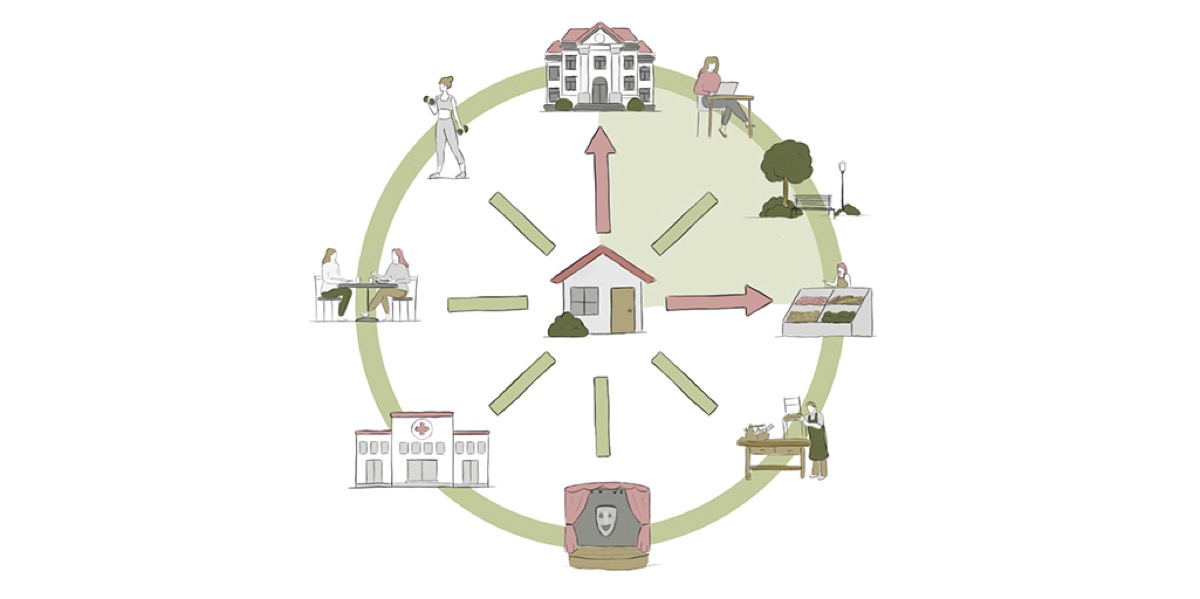Why go into the city center or cross it entirely when you can run an errand, make a purchase or use a service from the door of your house? Grosso modo, that question sums up the purpose of the new model of urban mobility being supported by the municipal governments of Paris and Stockholm.
In the French capital, the plan devised by a team working under mayor Anne Hidalgo is based on the 15-Minute City concept. She explains the project in her in her Twitter account:
La #VilleDuQuartDHeure, c’est quoi ? C’est la ville des proximités où l’on trouve tout ce dont on a besoin à moins de 15 minutes de chez soi. C’est la condition de la transformation écologique de la ville, tout en améliorant la vie quotidienne des Parisiens. ⤵️ #Hidalgo2020 pic.twitter.com/lcQbPAjdxj
— Anne Hidalgo (@Anne_Hidalgo) January 21, 2020
Sustainable Urban Mobility
The 15-Minute City concept was devised by Carlos Moreno, a researcher and urban planner at the Sorbonne and advisor to the Paris city hall. He believes that the first way to halt the consequences of climate change is to attack its main cause: mobility in the city. “The ideal would be to reduce this movement as much as possible. To live more in our immediate surroundings,” he said in an interview with France24.
To that end, says Moreno, it is necessary to “revitalize” that proximity so that each neighborhood can offer its residents infrastructures and services capable of covering these six basic needs:
. Living.
. Working.
. Buying.
. Caring for physical and emotional health.
. Finding education and culture.
. Areas for amusement and leisure.
In sum, everything that an average person requires in his daily existence, at just a small distance from his or her home and reachable by walking or by bike. Achieving a model of sustainable urban mobility.
Even though the project led by Carlos Moreno won’t be in place for another six years, several of its initiatives are already under way. One of them is to open schools on weekends to be used for all kinds of cultural and/or sporting activities for neighborhood residents.
Just like buying in local shops, an essential aspect of the project is to consume local products. Although Moreno recognizes how difficult it would be for a city as complex and densely populated as Paris to totally supply itself, he supports new alliances with areas near the capital that could supply it with the necessary products.
It’s what Moreno calls “short circuits” that connect the producers with the consumers, thus avoiding, as much as possible, excessive movement in transporting merchandise. An idea that could promove sustainable mobility systems.
One-Minute Cities
If Paris is an ambitious urban mobility project, so is the model called the One-Minute City: the local approach carried to the maximum.
Sweden is the country that has developed this concept the most, through projects where local neighborhoods play a vital role. Because it is the people themselves who, literally, give shape to their own street.

One of the greatest exponents of this approach is the initiative called Street Moves, carried out by ArkDes, the Swedish Center of Architecture and Design, in conjunction with the Lundberg Design studio, and which consists of filling the streets with modules of street furniture so that the residents themselves can decide how to use these urban spaces.
The idea is to give the residents different kits containing pieces of wood that they can assemble according to the neighborhood’s needs, as if they were Lego pieces on a human scale. They can create gymnasiums, urban gardens, children’s playgrounds and even areas to recharge electric scooters and cars.
While it is true that this latter model lacks the services included in the 15-Minute City (such as public transport and health care), the street is nevertheless the scaled-down representation of the city.
The idea, which has already been applied in several streets in Stockholm and will soon reach cities like Malmo and Gothenburg, follows what San Francisco did through its Parklets program, by which residents and restaurants can take advantage of parking places on the street as if they were an extension of the sidewalk.